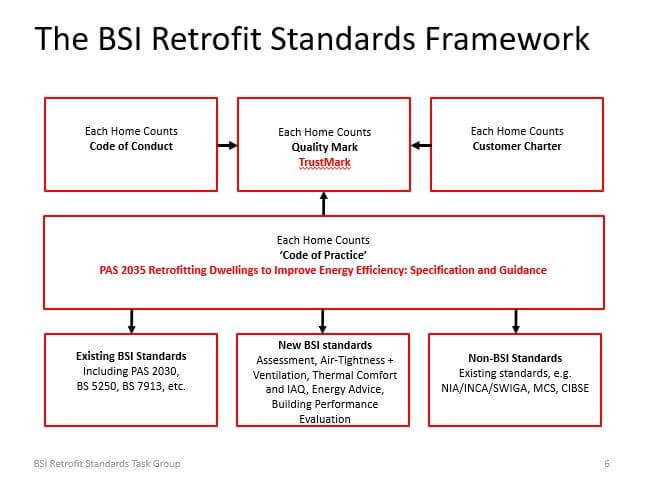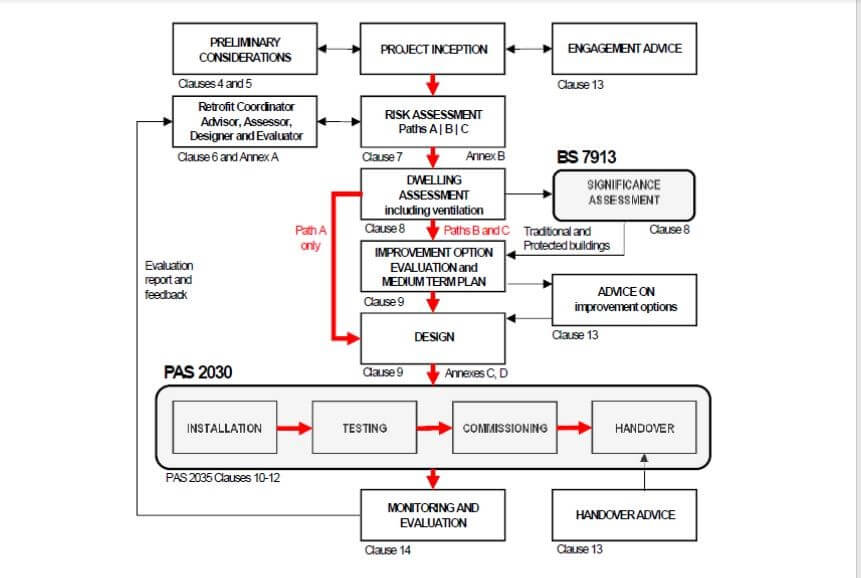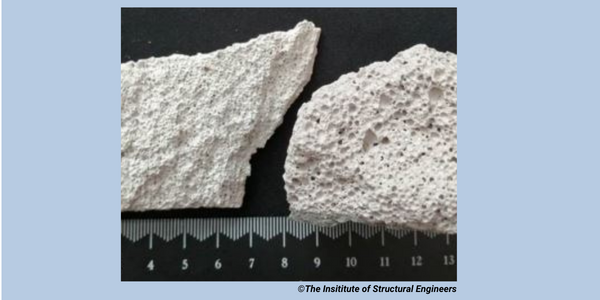Driving Retrofit Quality: PAS 2035
The Each Home Counts review was designed to restore the confidence of Government, the public and finance bodies in the retrofit industry, following many costly failures. Publicly Available Specification 2035:2019 (PAS 2035) is part of that process.

An implicit objective is to encourage the fragmented retrofit industry to change its business model by moving away from incremental, measures-based retrofit towards a ‘whole dwelling’ approach. The whole-dwelling model supports more systematic, cautious, considered and appropriate retrofit.

PAS 2035 is part of the Retrofit Standards Framework developed by the BSI Retrofit Standards Task Group in response to the recommendations of the Each Home Counts Review. Figure 1 shows the framework, in which TrustMark, supported by its Code of Conduct and Customer Charter, requires retrofit work to comply with PAS 2035. PAS 2035 itself requires compliance with many other standards published by BSI (e.g. PAS 2030, BS 5250 and BS 7913) and other bodies (e.g. the Microgeneration Certification Scheme, MCS). Thus, retrofit projects that are quality-assured by TrustMark must comply with all the relevant standards in the framework.
Compliance with PAS 2035 may be required for any UK domestic retrofit project. Every project must appoint a Retrofit Coordinator, who is responsible for ensuring PAS 2035 compliance and for protecting the client’s interest and the public interest.

Figure 2 illustrates the PAS 2035 process, which starts with the Retrofit Coordinator agreeing the intended outcomes of the project with the client (who may be a householder, a landlord, a funding body or some combination of these). A risk assessment then determines which of three ‘Paths’ through the PAS the project must follow. Path A is for simple projects involving very few measures – about 15% of projects will follow it. Most projects (perhaps 75%) will fall into Path B, which sets more stringent requirements. Projects involving high-rise or protected buildings, which involve the most technical risk, will fall into Path C.
The PAS 2035 process then involves a whole-dwelling assessment covering the context, condition and energy performance of the dwelling, including an assessment of the adequacy of any existing ventilation. If the ventilation is inadequate, and any insulation or air-tightness measures are to be installed, then the ventilation must be upgraded as well.
For projects following Paths B and C, an improvement option evaluation is required, to identify the most cost-effective measures for making the dwelling fit for 2050. A medium-term improvement plan is then developed, to identify, prioritise and sequence the work to be done, even if it cannot all be carried out immediately. A detailed design for the proposed initial measures is prepared, based on the medium-term improvement plan. The design must address thermal bridging, air tightness and moisture risks, and provide for adequate ventilation.
PAS 2035…promotes a considered and cautious approach to retrofit, which allows us to rise to the challenge of climate change with confidence
The design is then passed to a contractor or installer, who installs the improvement measures in accordance with PAS 2030:2019. The Retrofit Coordinator oversees installation, testing, commissioning and handover, on behalf of the client.
Finally, there is an evaluation process, again overseen by the Retrofit Coordinator, to check that the agreed outcomes have been achieved and that there have been no unintended consequences. If problems are identified, then further evaluation and remedial work may be required.
To ensure the competence of all involved, PAS 2035 specifies qualifications for the Retrofit Coordinator and for the assessor, designer and evaluator. The qualifications required for the assessor and designer depend on the risk Path, so for example evidence of additional expertise is required when traditionally constructed or protected buildings are retrofitted.
PAS 2035 sets a new standard for domestic retrofit in the UK. It is based on practical experience as well as technical research into retrofit risks, which it aims to remove from the process as far as possible. It promotes a considered and cautious approach to retrofit, which allows us to rise to the challenge of climate change with confidence.


